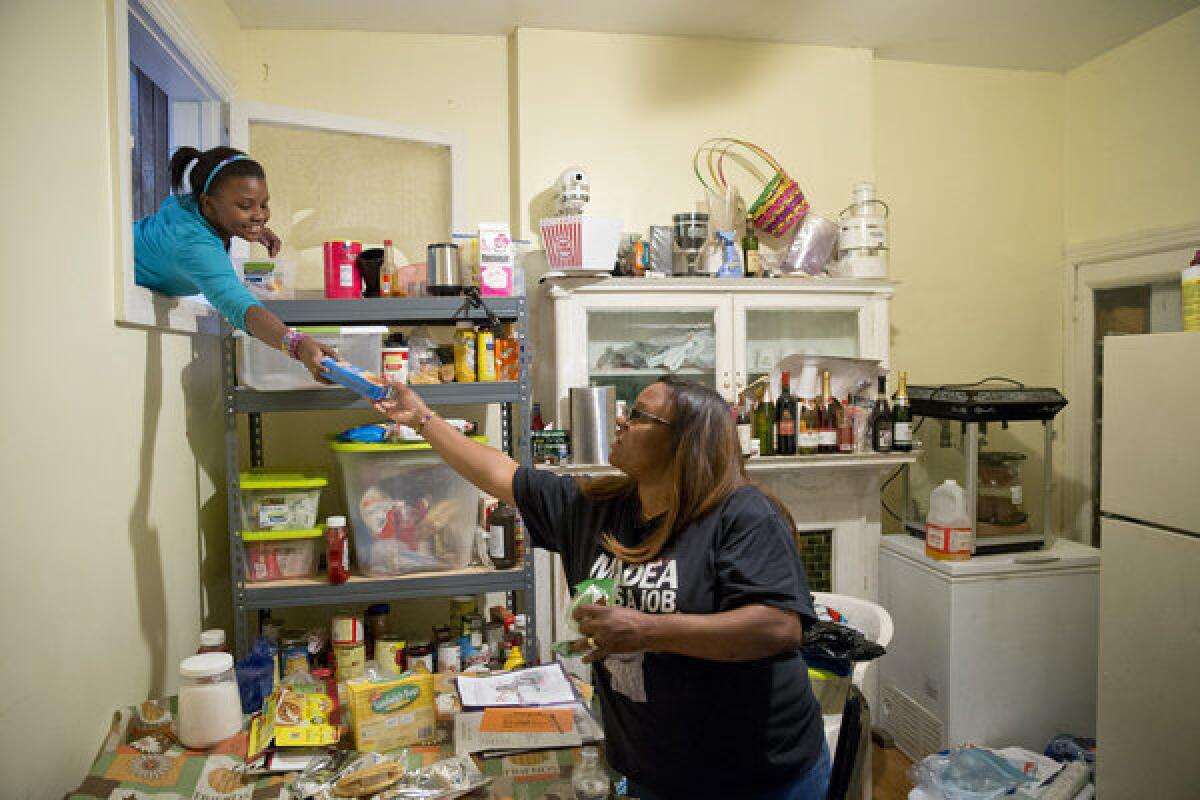How does a $36 food-stamps cut look on the kitchen table?

WASHINGTON--More than 47 million Americans who receive food stamps awoke on Friday to deal with the harsh reality that their benefits will decrease because emergency payments from the federal government to stimulate the economy have expired.
That decrease, which works out to about $36 a month for a family of four, could be just the first step in food allowance cuts. Congress is currently debating how to fund what is now called the Supplemental Nutrition Assistance Program, or SNAP, with Republicans seeking sharp reductions in the rapidly growing program.
While food prices vary around the country, what does a $36 cut represent in the pantry?
It roughly translates into a gallon of milk, a half gallon of orange juice and a pound of bread a week in many areas. Or think of it as a weekly purchase of a 2-pound package of rice, a pound of dry beans, a pound of ground beef and a dozen eggs using national average costs.
Or, if a celebration is on tap, a family of four could blow the weekly $9 on a typical fast-food meal of a fancy burger, fries and an ice-crammed beverage for one with a few bucks left over.
The current emergency benefit dates from 2009 when the federal government launched its stimulus efforts to revive an economy smashed by the fiscal crisis that threatened to destabilize banks and stock markets and bring major industries to a crashing halt.
While government officials continually cite statistics that the economy is improving (jobless rates are falling and the stock market is rising), SNAP has continued to grow. About 14% of all Americans get food aid and the cost has more than doubled to $80 billion a year.
That works out to a national average of about $278 a month per family, though there are wide differences based on geography. According to the August figures, a family of four (two adults and two children) need $640 to $1,264 for food. And that doesn’t include teenagers.
The food program is negotiated through the farm bill, now being debated in a conference committee between lawmakers in the two houses. The House and Senate have passed different versions of the farm bill, which also determines farm-support payments. Dairy farmers are already warning that the price of milk could leap.
Republicans are seeking to tighten eligibility requirements for food aid and to impose new work requirements on recipients.
Especially hard hit by Friday’s cuts are larger states like California, Illinois and New York where there are a high percentage of poor.
A bill has been introduced in the House to extend by one year the benefits increase contained in the Recovery Act through the 2014 fiscal year, but it is sitting in a House committee.
“We have a hunger problem in this country,” said Rep. Jim McGovern (D-Mass.), discussing the food stamp cuts during the opening of the farm bill negotiations earlier this week.
“It’s not fashionable to talk about it. It’s not -- it’s not a comfortable conversation to have, but it’s a fact,” he said. “There is not a single congressional district in the United States of America, the richest country in the history of the world, that is hunger free. Fifty million Americans struggle every single day to get enough to eat. And it’s hard to be poor. It’s very hard to be poor.’’
ALSO:
Strict Texas abortion law takes effect
Appeals court halts New York “stop-and frisk” ruling
Follow L.A. Times National on Twitter
Richard Simon contributed from Washington.
More to Read
Sign up for Essential California
The most important California stories and recommendations in your inbox every morning.
You may occasionally receive promotional content from the Los Angeles Times.











